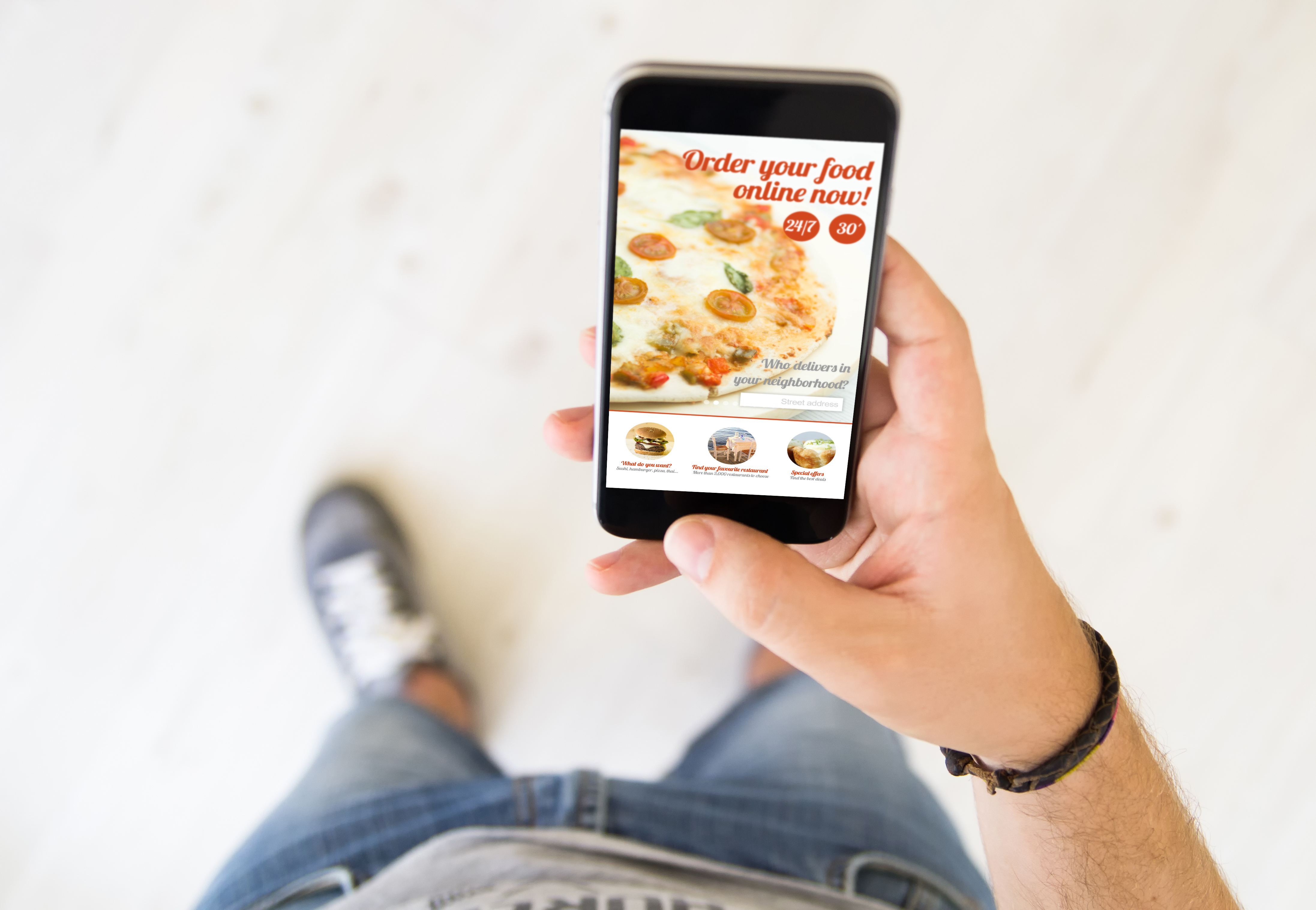With online ordering becoming almost a necessity for the modern restaurant, if you aren’t already offering online ordering, you’re falling behind. In fact, according to this study, one of the best technological features a restaurant can offer is online ordering. But don’t worry, you don’t have to stress about building your own internal system – there are services that will do the heavy lifting for you!
In this article, we’ll cover the main differences between the two major types of service options – third-party services and dedicated services – and the pros and cons for incorporating each into your restaurant.
Third-Party Services
Third-party online ordering services aggregate information about various restaurants onto a single site (like Yelp or UberEats). They’ll display the details, like address, phone number, and reviews, of restaurants and other businesses. Your business will be listed alongside many others that the consumers can choose from. These companies bring a lot of resources in both marketing collateral and their potential customer pool, but there are often large commissions and fees involved. If you choose to use a third-party service, make sure to inquire about their reputation among businesses and consumers in your area.
Pros
- Big Potential Customer Pool: The well-known sites have thousands of users who are always looking for a great place to eat.
- Marketing: Many third-party services will have additional marketing collateral to promote their online ordering services to your customers. Keep in mind, their company branding will likely be a prominent feature on any marketing pieces created for your business. But even so, it’s guaranteed to draw attention to your business.
- Price: Initial setup and equipment may be very cost-effective, even free, but there’s more to consider when commissions on orders enter the picture. Commissions can be anywhere from 12.5% to 30% of the order price!
- Delivery: This can be a benefit for restaurants who want to offer delivery, but do not have the in-house team to support it. However, relying on a separate company to fulfill orders can bring some risk–see the Cons below.
Cons
- Commissions and Fees: Most of these services get paid on a per-order basis. So when a restaurant receives an order through their site or mobile app, they charge you from 12.5% to upwards of 30% of your order price!
- Limited Control: This can be divided into two important aspects.
- Delivery: What happens if a delivery order is messed up? The dual entry of orders necessitated by a third-party service means there’s a higher risk of error. In general, relying on a business outside of your own will always carry some risks. But who will the customer blame: the delivery service or your restaurant?
- Menu Updates: If you aren’t in complete control of your website, how quickly can you change your menu, or what happens if you run out of a certain dish or make seasonal changes to your menu?
- Advertising the Competition: When your business is listed on a third-party listing website like Yelp, that company gets to decide who and what is advertised to customers visiting your page. Often times, these ads are for nearby restaurants–your direct competition! The only way to eliminate the ads of competitors on your page is to join a paid program. While paying an extra fee can help optimize your page and provide you with greater visibility on those sites, that fee can quickly become more than you’re willing to pay.
- Customer Retention Issues: Most business owners know that your best customers are the ones you already have. Creating customer loyalty from a third-party service can be much more difficult than doing so from a direct online ordering system. When customers are ordering through a third party service, are they becoming more loyal to your business or to that service? Who owns the customer data: your business or the third-party service? These are important questions to ask when considering your options.
Dedicated Services
These are online ordering services that are built specifically for your business. Rather than using or being taken to a third-party service, users visit your website to place their order. Many of these service providers are known as “white-labeled.” This means they share the same general technology but can be customized to your business and your brand. It is important to note that not all dedicated online ordering services offer the same level of customization, so be sure to ask about the features that are most important to your business.
Pros:
- More Options: Generally speaking, dedicated solutions will allow for more customizations to fit your brand. Dedicated options allow you to tailor the site to your customers and cuisine. Whether you are in quick service or fine dining, your site can be the convenient option your customers need.
- Menu Showcase: Many dedicated solutions will allow for more customization with menu presentation. Features such as menu images and highlighting top-selling items can increase average ticket sizes.
- Quicker Menu Updates: Most dedicated solutions will allow for easier updates by providing you with access to make adjustments yourself, and for a dedicated support team to assist whenever needed.
- Customer Data: Are you interested in knowing who your top customers are and what they’re ordering? With dedicated solutions, the data belongs to you. The level of detail in reporting will vary from company to company, so it’s important to ask about which types of data are captured.
Cons:
- Limited Exposure: Unlike third-party services, dedicated online ordering services don’t bring a large pool of potential customers with them–the customers are your own. A dedicated service requires you to do more of the legwork upfront, but they may also allow you to generate more from your customers once acquired. That’s why it’s important to check with service providers about marketing and advertising collateral to promote your online ordering, and additional advertising opportunities that they may be able to provide.
- Delivery: For restaurants that do not provide delivery themselves, this can be a drawback. Some dedicated services will have partnerships with delivery services in your area, or you may wish to use one of your own. This is an important question to ask when choosing a dedicated option.
- Site Maintenance: Someone has to run the site, make updates, and make sure it is operational. Running a restaurant is time-consuming; adding a self-operated online ordering site to the equation may not make sense for some establishments. Some services will ensure that your online ordering integrates with your website, or may even create an online ordering page for your business as a part of their services. Make sure to ask any company what they provide and how much support is included.
Online ordering doesn’t have to be daunting; you can easily utilize the feature to not only attract new customers, but to help improve customer experience for your loyal patrons. Want to learn about the different service providers? Check out Online Ordering for Restaurants: the need to know guide, to learn more about the different types of online ordering services and how to best use them to maximize ROI.




